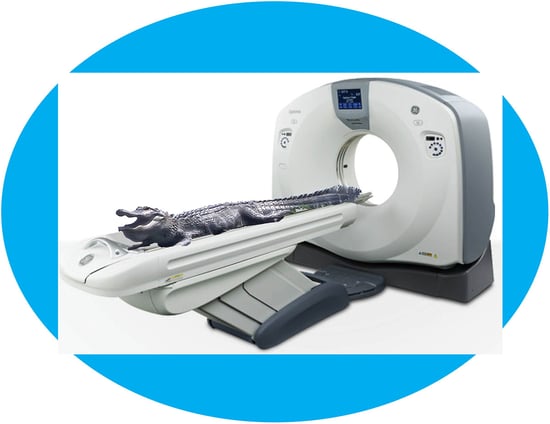Are you considering purchasing a CT Scanner for your Veterinary Clinic? There are a lot of good reasons to do so.

The high-resolution images produced by a CT Scanner can help you evaluate a pet's anatomy in great detail. It provides much more detail than an X-ray machine, including excellent detail of bony and soft tissue structures in the animal’s body. The most common areas of the body a veterinarian can scan with a CT include the spine, nasal cavity, inner ear, bones/joints and the chest/lungs. A CT Scanner can also be used to assess lymph nodes, thyroid gland, abdominal organs, skull/brain and vascular structures. When combined with a contrast agent given to a pet intravenously (IV), you can view increased areas of blood flow in the body which can aid in the detection of cancer and areas of inflammation.
But how do you know if getting a CT Scanner is right for you and your practice? Here are a few things to consider.
Do You have Room For A CT Scanner?
As a rule, you’ll need a room approximately 300 sq. ft. in order to accommodate a CT Scanner. It will provide your staff with the ability to easily maneuver around the gantry and gives you enough room on either side of the equipment to easily service it. In addition, you’ll need an area immediately adjacent to your CT Scanner Room for use as the control area. It can be as simple as a small desk in a hallway, but it is essential.
If you don’t have a room large enough for a CT Scanner, you can always consider a Mobile CT trailer for your clinic. Your CT Scanner would be placed inside the trailers that would be situated in your parking lot. This is especially convenient if you treat larger animals or equine.
What Slice Count Is Ideal?
Most veterinary clinics with a CT Scanner have a 4/6 or 8 slice CT. They will adequately provide the proper imaging for animals but the scan time is slower and lower resolution than the 16/34/64 slice count CT Scanners. If it’s going to be used primarily for oncology, it’s best to purchase a 16/32 slice machine.
Do I Need a New CT Scanner Or Will A Refurbished One Work?
It really comes down to cost and budgets. You can get the performance you want and a service warranty you need with a used or refurbished device and save significantly. A new device will cost a lot more, but you might get one additional year of service coverage. It’s wise to talk to an expert to see what is right for your clinic.
Talk To Atlantis Worldwide
For more than 30 years the experts at Atlantis Worldwide have helped clients find the ideal refurbished or used medical imaging equipment to fit their needs and their budgets. They can provide guidance and information that will help you make the best decision for your needs.
Some blogs you may have missed:
- 13 Questions to Ask Your Imaging Equipment Service Provider
- The 101 On Veterinary X-Ray Equipment
- C-Arms - The Perfect Tool for Veterinarians
- Does Your Veterinary Practice Need a MRI?
- Choosing A C-Arm For Your Veterinary Practice
Meet the author: Vikki Harmonay



